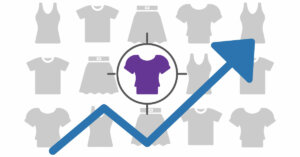SiteSpect Synopsis: Privacy & Personalization
By Nicole Hanson
August 12, 2021
Share
Marketers have had to keep up with many new privacy regulations in recent years, including laws like GDPR and CCPA, and browser tracking protections like Safari ITP. According to a Pew report, 79% of Americans are concerned about the way companies are using their data. But even with data privacy concerns, people want and expect personalization. Epsilon research found that 80% of consumers are more likely to purchase from a brand that offers personalized experiences. So, do you have to choose between privacy and personalization?
While the two concepts may seem mutually exclusive, there are ways to provide relevant, personalized experiences and adhere to consumer privacy regulations. Here are a few industry articles with tips to balance privacy and personalization.
Forbes: Precision Marketing and Personalization in a Cookie-Less World
Increasing privacy regulations have advertisers reevaluating their audience targeting options. With third-party cookies on their way out, first-party data will become the cornerstone of advertising and personalization. While it may not be the simplest transition, it is crucial for brands to meet customers’ expectations for both privacy and personalization. Author Girish Ramachandra recommends a few ways in which advertisers can succeed in this new digital ecosystem, such as trying various data collection methods and leveraging AI and automation. Ramachandra states, “A clear focus on first-party data and a scalable operational process will be critical success factors for brands to win with precision marketing and personalization.”
Total Retail: The False Choice Facing Retailers: Data Privacy Compliance Doesn’t Mean Lack of Personalization
Consumer privacy has become a global concern, and retailers have had to keep up with many new privacy laws and regulations. On the flip side, the pandemic drove us into a new digital-first era, making personalized experiences more important than ever. So, how can retailers meet consumers’ needs for both privacy and personalization? Zero-party data might be the best option, author Wendell Lansford says.
Unlike first- or third-party data, zero-party data is “consent-based personal context data that customers knowingly and intentionally share with a retailer in order to improve their experience,” and can be collected using email opt-ins, quizzes, and more. Lansford says, “By introducing a consent-based and engaging approach with ZPD, brands can provide a wholly better experience for every customer that will keep them returning to their site.”
Digital Commerce 360: Is Invited Personalization the Future of Cookieless Marketing?
As browsers move away from cookie-based tracking, marketers are focusing on collecting first-party data from consumers. Since first-party data is provided willingly by customers, it allows brands to comply with increasing privacy regulations and deliver relevant personalization. Author Sai Koppala discusses the idea of “invited personalization,” where customers provide information in exchange for relevant, personalized experiences.
While brands may be afraid to ask for too much information and cause friction, invited personalization fosters transparency and increases customer loyalty. “When you obtain data openly and honestly, you kick off the relationship from a place of mutual trust and engagement, where both parties feel good about the exchange and benefit from it. This is the starting point for longer-term connection and loyalty,” Koppala says.
To learn more about SiteSpect, schedule a discovery call.
Share
Suggested Posts
Subscribe to our blog:





